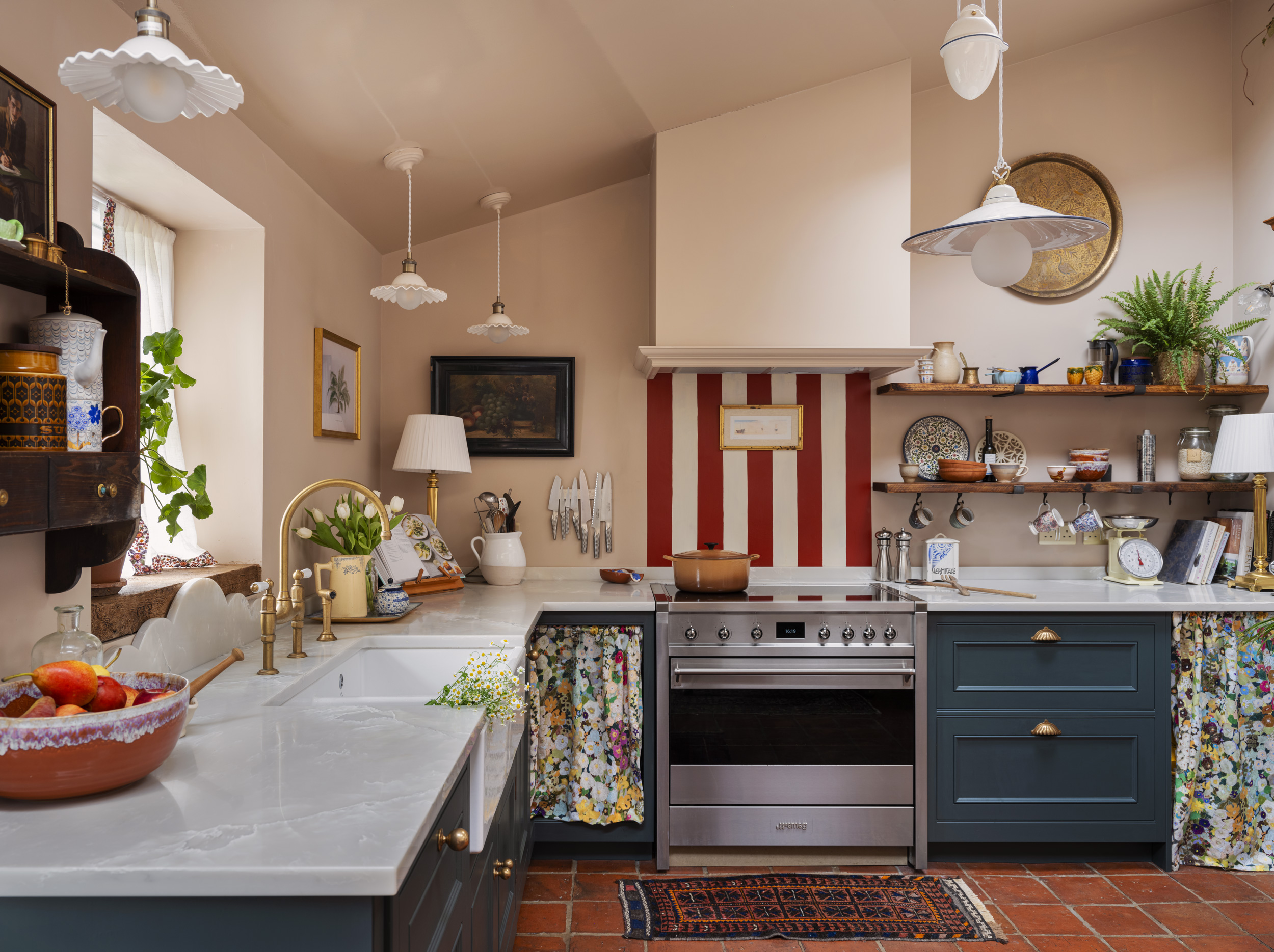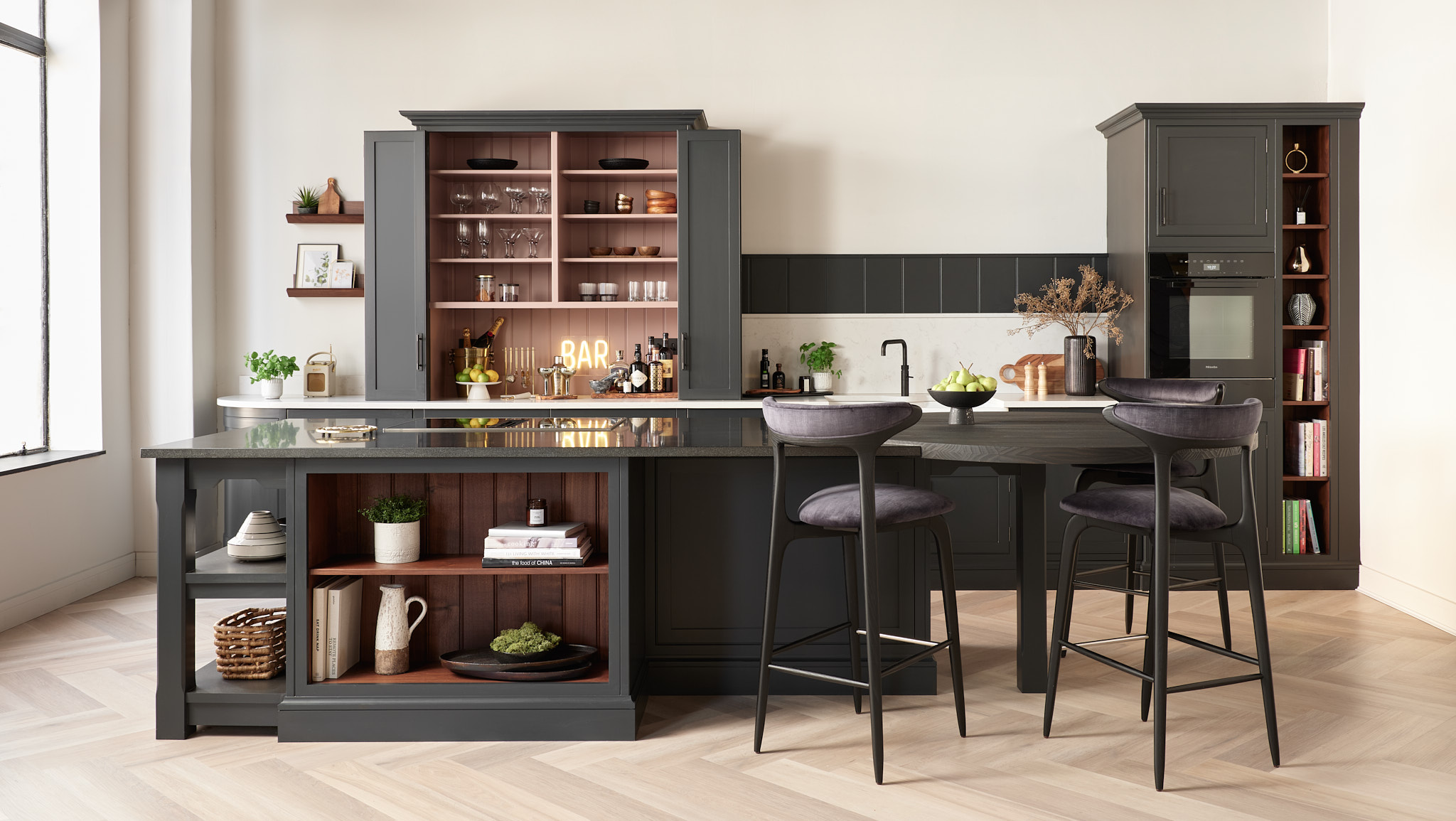
There are many big decisions to make when renovating a kitchen, which can make it easy to neglect the smaller details, such as the taps. However, these are a key component and will get plenty of use, so it’s important that they’re robust, stylish, and suited to your particular needs. But even though it’s a tiny element of your kitchen in the grand scheme of things, you may be surprised by just how much there is to consider when choosing kitchen taps.
Here at Harvey Jones, all our kitchens come with a range of water work options. Please don’t hesitate to request an appointment with our designers to discuss through your options. Hopefully, this guide will help to inform your decision until then.
The importance of water pressure
Before you start looking at kitchen taps, it’s essential to know which of the following water systems you have in your home:
LOW PRESSURE SYSTEM
Also known as gravity fed systems, these have a cold water tank (usually located in the loft) and a hot water cylinder elsewhere.
HIGH PRESSURE VENTED SYSTEM
This system has a combination boiler instead of cold and hot water tanks, which instantly heats water from the mains as soon as a hot water tap is turned on.
HIGH PRESSURE UNVENTED SYSTEM
High pressure unvented systems use a hot water tank only. This heats the water with immersion heaters, which are either located on the tank or in a central heating boiler.
Identifying your water system will prevent you from buying a tap that doesn’t perform as anticipated. For instance, if you have a low-pressure system but fit a high-pressure tap, the water flow will be very weak. Only certain taps work with low pressure systems, while most are compatible with high pressure unvented systems, and all tap options are suitable for a high pressure vented one. Therefore, knowing your water system will instantly determine which kitchen taps are available to you.
The different types of kitchen taps
PILLAR TAPS
The most affordable and classic type of kitchen tap, a pillar option comes with a pair of taps and spouts, with one releasing cold water, and the other hot.
MONOBLOC KITCHEN TAPS
Monobloc kitchen taps have a single lever controlling the flow and water temperature, and a single spout.
DECK MIXER TAPS
Like monoblocs, deck mixer taps have a single spout but have two separate handles for hot and cold water.
Kitchen tap features
HANDLES
Handles impact the look and functionality of your taps. For example, those with lever handles are great for busy kitchens, as you can quickly turn the water on using the back of your hand, while taps with crosshead handles are ideal for a more classic aesthetic.
SPOUTS
Kitchen taps with a high spout offer more space in the sink, making washing up and filling pots and pans with water much easier. Those with swivel spouts are also incredibly convenient as you can move them out of the way when necessary, and direct water into different utensils.
VALVES
One other thing to consider is the type of valve. A traditional brass compression valve is made from solid brass with a watertight seal and rubber washer, though these can wear over time and cause drips. Meanwhile, ceramic disc valves are generally more robust, with no leaks or drips, making them a much more popular option.
Kitchen tap technology options
While you probably wouldn’t expect to ever see the words “tap” and “technology” in the same sentence, there are a number of useful features you can choose to make your kitchen taps even more functional.
PULL OUT KITCHEN TAPS
Pull out kitchen taps are removable, with a nozzle on a hose allowing you to clean across your kitchen, and wash up more efficiently.
BOILING WATER TAPS
These taps supply boiling water on demand, making them ideal for hectic kitchens where you don’t want to wait for the kettle to boil. These can be incorporated into a monobloc set up as part of a 3-in-1 handle, or a mixer set up as a separate boiling water lever.
FILTER TAPS
These types of taps allow you to enjoy a glass of filtered water whenever you like. It’s important to note that the filter below the sink will need to be changed regularly.
Kitchen tap finishes
There are three types of tap finish you can go for: chrome stainless steel, brushed stainless steel or coloured. Whatever you choose, we always recommend matching your taps with other elements of the room, such as your cabinet handles, storage containers and cooking utensils.
CHROME STAINLESS STEEL
Chrome stainless steel is perhaps the most common finish, providing great durability due to its resistance to heat and water.
BRUSHED STAINLESS STEEL
This finish is ideal if cleanliness is a priority. Fingermarks are massively reduced compared to chrome stainless steel taps, making them the perfect family-friendly choice.
COLOURED TAPS
If stainless steel isn’t your style, then coloured taps could be the way to go. Made from materials including copper, brass or gold, you can get them in any shade you like, with black taps proving particularly popular right now. The huge choice available makes it easy to match your taps to any kitchen design.







